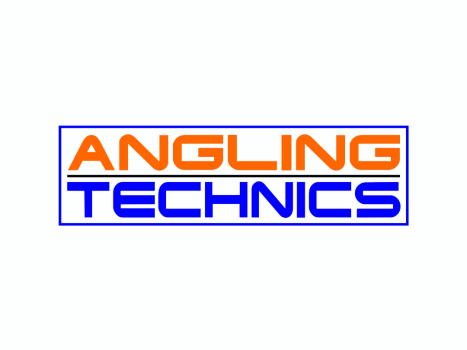The Emergence of 3D Printed Parts in Carp Fishing: Revolution or Risk?
Carp fishing, a beloved pastime for many anglers, is both a serene escape and a thrilling sport. The gear used by carp anglers has evolved over the years, with innovations continuously improving the experience. Among these innovations, 3D printing has emerged as a fascinating technology with the potential to revolutionise the way anglers approach their equipment. But does it truly have a place in carp fishing, or should anglers stick to tried-and-tested gear from retailers?
In this comprehensive blog post, we will explore the use of 3D-printed parts in carp fishing, examining their advantages, limitations, and potential impact on the sport. We will also consider whether 3D printing is a viable alternative to purchasing gear from established retailers or if it's merely a passing trend.
The Rise of 3D Printing in Carp Fishing
3D printing, also known as additive manufacturing, involves creating three-dimensional objects by layering materials, typically plastic or resin, based on digital designs. This technology has been around for several decades, but it has only recently become accessible to hobbyists and small businesses. In the context of carp fishing, 3D printing offers a unique opportunity to customise and create gear tailored to individual preferences and needs.
Customisation: A Game-Changer for Anglers
One of the most significant advantages of 3D printing in carp fishing is the ability to customise gear. Anglers can design and print parts that perfectly match their fishing style, the specific waters they fish in, and the species they target. For example, an angler might create a baiting tool that holds a precise amount of bait, or a rig component that is optimised for a particular fishing scenario.
Customisation extends beyond functionality; it also allows anglers to personalise the aesthetic of their gear. With 3D printing, it's possible to create parts in specific colours, patterns, or even with personal engravings. This level of personalisation is difficult to achieve with mass-produced gear available from retailers.
Prototyping and Innovation
3D printing also enables anglers to prototype and test new ideas quickly. If an angler has a concept for a new type of bait holder or a unique rig component, they can design and print a prototype within hours. This rapid prototyping capability is invaluable for those who enjoy experimenting with different setups and techniques.
Innovation in carp fishing gear has traditionally been driven by manufacturers, but 3D printing allows individual anglers to contribute to this innovation. By sharing designs online, anglers can collaborate and refine ideas, leading to the development of new and improved fishing gear.
Advantages of 3D Printed Parts in Carp Fishing
The use of 3D-printed parts in carp fishing offers several distinct advantages that make it an attractive option for many anglers. Let's delve into some of the key benefits:
Cost-Effectiveness
One of the most appealing aspects of 3D printing is the potential for cost savings. While the initial investment in a 3D printer can be significant, the cost of producing individual parts is often much lower than purchasing them from a retailer. This is particularly true for specialised or custom components that may be expensive or difficult to find in stores.
For example, small accessories like baiting tools, rig components, or even simple items like line clips can be produced at a fraction of the cost of purchasing them from a retailer. Over time, these savings can add up, especially for anglers who frequently experiment with new gear.
Accessibility and Availability
In some cases, the gear needed for specific carp fishing techniques may not be readily available in local shops or online stores. This is where 3D printing shines, as it allows anglers to create the exact parts they need without relying on the availability of commercial products. This is particularly useful for those who fish in remote areas or who require niche equipment.
Moreover, during periods of high demand or supply chain disruptions, certain items may become scarce or overpriced. With a 3D printer, anglers can avoid these issues by producing their own parts on demand.
Customisation and Personalisation
As mentioned earlier, customisation is a significant advantage of 3D printing. Anglers can design gear that suits their specific needs, whether it's a baiting spoon with a particular capacity or a rig component with a unique shape. This level of customisation is difficult to achieve with mass-produced gear, where one-size-fits-all solutions are the norm.
In addition to functionality, 3D printing allows for aesthetic customisation. Anglers can create gear in their favourite colours, with personalised engravings, or in designs that match their overall fishing setup. This personal touch adds an extra layer of satisfaction to the fishing experience.
Lightweight and Compact Designs
3D printing enables the creation of lightweight and compact designs that may not be possible with traditional manufacturing methods. For example, an angler could design a collapsible baiting spoon that is easy to transport and store, or a rig box with a space-saving layout that fits neatly into a tackle bag.
These lightweight and compact designs are particularly advantageous for anglers who need to carry their gear over long distances or who fish in challenging environments where space and weight are critical considerations.
Limitations and Challenges of 3D Printing in Carp Fishing
While 3D printing offers numerous benefits, it is not without its limitations and challenges. Anglers considering the use of 3D-printed parts in their fishing setup should be aware of these potential drawbacks:
Material Limitations
The most commonly used materials in 3D printing are plastics, such as PLA (Polylactic Acid) and ABS (Acrylonitrile Butadiene Styrene). While these materials are suitable for many applications, they may not be as durable or resistant to wear and tear as the materials used in commercially produced fishing gear.
For example, a 3D-printed baiting tool made from PLA may not withstand the rigours of repeated use in harsh conditions, such as exposure to water, UV light, and rough handling. Over time, the material may degrade, leading to a shorter lifespan compared to similar products made from more robust materials.
Strength and Durability
Related to material limitations is the issue of strength and durability. 3D-printed parts, particularly those made from standard plastics, may not be as strong or durable as their commercially produced counterparts. This is especially important in carp fishing, where gear is often subjected to significant stress and strain.
For example, a 3D-printed rod holder may not be able to support the weight and force exerted by a powerful carp, leading to potential failure at a critical moment. Similarly, rig components made from 3D-printed plastics may break or deform under pressure, resulting in lost fish or damaged gear.
Precision and Quality Control
While 3D printing allows for customisation, the precision and quality of the printed parts can vary depending on the printer's capabilities and the design itself. High-end 3D printers can produce parts with excellent precision, but they come at a higher cost. Lower-end printers, which are more accessible to hobbyists, may produce parts with less accuracy and consistency.
This variability in quality can be a significant drawback, particularly for critical components such as rig parts or baiting tools. Inaccurate or poorly printed parts can lead to performance issues or even gear failure, which can be frustrating and costly for anglers.
Time and Effort
3D printing requires a significant investment of time and effort, both in terms of learning the technology and designing the parts. While there are many online resources and pre-made designs available, anglers who want to create custom parts will need to invest time in learning 3D modelling software and optimising their printer settings.
For some anglers, this learning curve may be a barrier to entry, particularly if they prefer to spend their time fishing rather than tinkering with technology. Additionally, the printing process itself can be time-consuming, with complex parts taking several hours to print.
Safety and Environmental Considerations
When discussing 3D printing, it's essential to consider both safety and environmental factors. While 3D printing can be an exciting and innovative way to enhance carp fishing, it's important to use this technology responsibly.
Safety Concerns
Safety is a critical consideration when using 3D-printed parts in any application, including carp fishing. Many of the materials used in 3D printing, such as PLA and ABS, emit fumes during the printing process that can be harmful if inhaled in large quantities. Proper ventilation and protective measures should be in place when using a 3D printer to mitigate these risks.
Moreover, the durability and strength of 3D-printed parts can impact safety during fishing. For example, a 3D-printed hook sharpener that fails could result in injury. Therefore, anglers should ensure that the parts they produce are tested thoroughly before use in real-world scenarios.
Environmental Impact
The environmental impact of 3D printing is another important consideration. While 3D printing can reduce waste by allowing anglers to produce only the parts they need, the plastic materials commonly used in 3D printing can still contribute to environmental pollution if not disposed of properly.
Some 3D printing materials, like PLA, are biodegradable under specific conditions, but others, like ABS, are not. Anglers who are concerned about the environment should seek out eco-friendly materials and consider the entire lifecycle of the parts they produce, from production to disposal.
3D Printing vs Retail Gear: A Comparative Analysis
With the benefits and challenges of 3D printing in mind, let's compare 3D-printed parts with gear purchased from traditional retailers. This comparative analysis will help determine whether 3D printing is a viable alternative or if anglers should stick to buying gear from established brands.
Quality and Reliability
One of the most significant advantages of buying gear from retailers is the assurance of quality and reliability. Established brands have spent years refining their products, using materials and manufacturing processes that are proven to withstand the demands of carp fishing.
For example, a rig component
from a reputable brand is likely to have undergone extensive testing to ensure it performs well under various conditions. In contrast, a 3D-printed component may not have the same level of quality control, leading to potential issues in durability and performance.
However, with careful design and proper use of materials, it is possible to produce high-quality 3D-printed parts that meet the demands of carp fishing. For anglers who are willing to invest the time and effort into learning the technology, 3D printing can offer a level of customisation that is difficult to achieve with retail gear.
Cost Considerations
As discussed earlier, 3D printing can be a cost-effective alternative to purchasing gear from retailers, especially for custom or specialised components. The ability to produce parts on demand also eliminates the need to buy expensive, one-size-fits-all solutions.
However, it's essential to factor in the initial cost of the 3D printer, materials, and any additional tools or software needed. For occasional anglers or those who prefer simplicity, the convenience of purchasing gear from a retailer may outweigh the potential cost savings of 3D printing.
Additionally, the cost of 3D printing can vary depending on the complexity and size of the parts being produced. For larger or more intricate components, the cost of materials and time investment may approach or exceed that of purchasing similar items from a retailer.
Convenience and Availability
Retail gear offers the convenience of immediate availability, allowing anglers to quickly obtain the items they need without the time and effort required to design and print them. This is particularly important for anglers who may need gear on short notice or who lack the technical skills required for 3D printing.
However, 3D printing offers a level of convenience in terms of customisation and availability that retail gear cannot match. Anglers can create exactly what they need, when they need it, without relying on the availability of commercial products. For those who enjoy the process of creating and customising their gear, 3D printing offers a unique and satisfying experience.
Innovation and Creativity
3D printing empowers anglers to innovate and experiment with new ideas, something that is often limited by the options available in retail gear. This creativity can lead to the development of new techniques and equipment that enhance the carp fishing experience.
For example, an angler might design a unique rig component that improves bait presentation or a specialised tool that streamlines a particular aspect of fishing. By sharing these innovations with the fishing community, 3D printing enthusiasts can contribute to the ongoing evolution of carp fishing gear.
On the other hand, retail gear benefits from the expertise and experience of established brands, which often invest heavily in research and development to create innovative products. While 3D printing allows for individual creativity, retail gear provides the assurance of tried-and-tested solutions backed by years of industry knowledge.
Case Studies: 3D Printing in Carp Fishing
To better understand the practical applications of 3D printing in carp fishing, let's examine a few case studies where anglers have successfully integrated 3D-printed parts into their fishing setups.
Case Study 1: Custom Baiting Tools
A keen carp angler, frustrated by the limitations of commercially available baiting tools, decided to design and print his own custom baiting spoons. Using a 3D modelling software, he created a design that allowed him to adjust the spoon's capacity to hold different amounts of bait. He also added ergonomic features to improve comfort during use.
The result was a set of baiting tools that perfectly matched his needs, allowing him to bait his swim more efficiently and with greater precision. By sharing his designs online, other anglers were able to download and print the same tools, leading to a small community of users who further refined and customised the design.
Case Study 2: Innovative Rig Components
Another angler used 3D printing to experiment with new rig components. He designed a unique line aligner that improved the hooking efficiency of his rigs. After testing the design in various fishing scenarios, he found that it consistently outperformed the standard components he had been using.
Encouraged by the results, he shared the design with other anglers, who reported similar success. The design eventually gained popularity within the carp fishing community, leading to discussions and further innovations that enhanced its effectiveness.
Case Study 3: Personalised Accessories
A third case study involves an angler who used 3D printing to create personalised accessories for his fishing setup. He designed and printed a custom rig box with compartments sized specifically for his preferred rigs and terminal tackle. The box featured his initials engraved on the lid, adding a personal touch to his gear.
This level of personalisation not only improved the organisation of his tackle but also enhanced his overall fishing experience. The custom rig box became a conversation piece among fellow anglers, sparking interest in the possibilities of 3D printing in carp fishing.
The Future of 3D Printing in Carp Fishing
As 3D printing technology continues to advance, its potential applications in carp fishing are likely to expand. Here are some predictions for the future of 3D printing in this sport:
Improved Materials
Advancements in 3D printing materials will likely address some of the current limitations, such as durability and strength. New materials designed specifically for outdoor and aquatic environments could make 3D-printed parts more competitive with commercially produced gear.
For example, researchers are developing materials that mimic the properties of natural substances, such as rubber and wood, which could be used to create more resilient and environmentally friendly fishing gear. Additionally, composite materials that combine the strength of metals with the flexibility of plastics could revolutionise the design of 3D-printed fishing equipment.
Enhanced Printing Technology
As 3D printing technology improves, we can expect to see printers that offer greater precision, faster print times, and the ability to work with a wider range of materials. These advancements will make it easier for anglers to produce high-quality parts that meet the demands of carp fishing.
For example, multi-material 3D printers that can print in both rigid and flexible materials simultaneously could open up new possibilities for creating complex, multi-functional fishing gear. Additionally, improvements in print resolution will allow for the production of finer details, making 3D-printed parts more competitive with traditional manufacturing methods.
Greater Accessibility
As 3D printers become more affordable and user-friendly, the technology will become more accessible to a broader audience of anglers. This increased accessibility will likely lead to a surge in creativity and innovation within the carp fishing community.
For example, user-friendly design software and online platforms for sharing and downloading designs will make it easier for anglers to create and customise their gear. This democratisation of design could lead to a new era of collaboration and innovation in carp fishing equipment.
Integration with Other Technologies
The future of 3D printing in carp fishing may also involve integration with other emerging technologies, such as artificial intelligence (AI) and the Internet of Things (IoT). For example, AI-powered design software could help anglers optimise their designs for specific fishing conditions, while IoT-enabled 3D printers could allow for remote monitoring and control of the printing process.
Additionally, 3D printing could be used in combination with other manufacturing techniques, such as CNC machining or injection moulding, to create hybrid parts that combine the best features of each method. This approach could lead to the development of highly specialised and innovative fishing gear that meets the unique needs of individual anglers.
Conclusion: Is There a Place for 3D Printing in Carp Fishing?
The use of 3D-printed parts in carp fishing is a topic that sparks both excitement and debate within the angling community. On one hand, 3D printing offers unparalleled opportunities for customisation, innovation, and cost savings. It empowers anglers to take control of their gear, designing and producing parts that perfectly match their needs and preferences.
On the other hand, 3D printing comes with its own set of challenges, including material limitations, concerns about durability, and the time and effort required to learn and master the technology. Additionally, the quality and reliability of 3D-printed parts may not always match that of commercially produced gear from established brands.
So, should anglers embrace 3D printing as a viable alternative to buying gear from retailers? The answer depends on individual preferences, needs, and willingness to invest in the technology. For those who enjoy tinkering with designs, experimenting with new ideas, and creating personalised gear, 3D printing offers a unique and rewarding experience that can enhance their carp fishing adventures.
However, for anglers who prioritise reliability, convenience, and proven performance, traditional retail gear remains a safe and dependable choice. Established brands continue to offer high-quality products that are rigorously tested and optimised for the demands of carp fishing.
In the end, the choice between 3D printing and retail gear is not a binary one. Many anglers may find value in incorporating both approaches into their fishing setup. By using 3D printing for custom accessories and specialised parts, while relying on retail gear for critical components, anglers can enjoy the best of both worlds.
As 3D printing technology continues to evolve, its role in carp fishing is likely to grow. Whether you're a seasoned angler or a newcomer to the sport, exploring the possibilities of 3D printing could open up new avenues for creativity and innovation in your fishing journey. So, why not give it a try and see where your imagination takes you?






